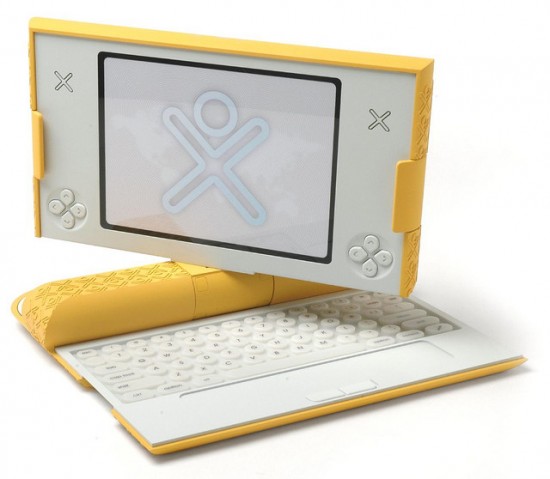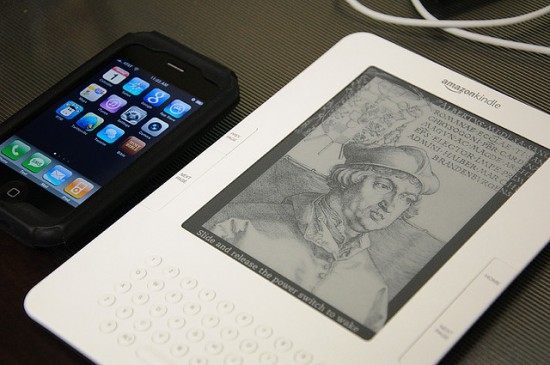If you’re lucky, you have a level of control over your office setup. That’s a given if you work for yourself, but many web companies today are flexible with their employees. The overarching rule: whatever helps you get the work done on time. In a recent post Dustin Lewis discussed office designs for productive work environments. Yet that’s only one piece of the puzzle. The machines we use to accomplish our tasks play a large part as well.
Choosing the right computing tool for the job might seem like an obvious, straight forward decision. But with the rapid development of computer technologies, and the ever-expanding definition of a computer, the conversation is perpetually in flux. There are a few different options, and each worker will find the greatest benefit from different choices.
The One-Device Solution
Back when I started working with Web 2.0 technologies, the one-device solution was pretty much universal. Almost everyone I knew worked from a laptop and nothing else. My basic MacBook sufficed when it came to blogging and basic social media. It was a cheap enough device, and it required little maintenance. Easy solution, right?
As I dove deeper into Web 2.0 production and marketing, my needs changed. That basic MacBook no longer sufficed on its own. It couldn’t handle podcast production, video conferences, code compilation, and the many large applications that a Web 2.0 producer needs daily. In order to satisfy my computing needs with just one computer, I’d have to upgrade — big time.
For Mac users this means the MacBook Pro, which is considerably more expensive than the basic MacBook. Other companies, such as Toshiba and HP, produce high powered laptops for professional use. These are quite large, and so work well in an office setting. Yet they still allow for some level of mobility. It’s not a treat carrying around a 15-inch laptop that weighs almost six pounds, but it’s better than having no portability at all.
Yet there is a different solution, one that many still married to their powerful laptops haven’t considered. But when my MacBook broke and I clearly needed an upgrade, it struck me as a worthwhile investment.
Desktop Plus Portable Device
When my MacBook suffered a terrible fate, plunging from my desk to the floor, a replacement device became Priority No. 1. But did I really want to trust my sensitive files — which I freaked out about losing — to another laptop? The portability is nice, but the reliability of a desktop was pretty tantalizing at that point.
Not only are desktops more reliable than laptops, they’re much cheaper when comparing similar specs. Combine that with switching off the Mac brand and the savings would certainly follow. It was when browsing desktops on NewEgg.com that I realized a potential alternative to the one-device game. By combining a powerful desktop with a mobile device, I could fulfill all of my needs while remaining flexible.
After finding a reasonably priced desktop that had the power and memory I needed, I went to check out some of the Ultrabooks that just came onto the market. I found that a Lenovo Ultrabook provided me with everything I needed. They’re super portable, weighing under four pounds. Since both the Ultrabook and the desktop run on Windows, they’re also highly compatible. It seemed like the perfect combination.
Given the prices of both devices, I spent about as much as I would have on a MacBook Pro. Yet I got a reliable, powerful computer for my home office and a portable yet high functioning machine for my travels.
The Cloud Makes It Possible
What makes the two-machine solution even more appealing is the growth of cloud services. Using a storage locker such as Dropbox (and using its referral service to get more storage for free), I can sync files between both of my computers. I can also access those on my smartphone, which makes the portable life even easier. Where I’d previously have to send myself a series of email attachments I could now simply upload to Dropbox and get moving.
If the last few years have proven anything, it’s that technology allows us to re-imagine our office setups. When I started in the workforce everyone had a desktop and little in terms of mobility. Soon thereafter it seemed that every company was issuing laptops and encouraging employees to work whenever, from wherever, if it helped them get the work done. Now we have many more ways to accomplish that.
When looking for a new office setup, it might seem obvious to stick with the one-device solution. After all, if you use your whole budget towards that one machine you can get one that fulfills your needs on many levels. But that one device might not cover all your needs. Perhaps in today’s high-powered world, a blend of stationary and mobile is the way to go. I have to say that it’s worked for me this year.
Joe Pawlikowski runs a number of website, producing and marketing content for them. He keeps his thoughts on mindset and other topics at JoePawl.com.















For serious development use a desktop machine, they are more durable and stronger too. And cheaper for the performance you get.
Use two disks, SSD for system and other, classical large HDD for data. Have enough RAM, at least 4Gb. And I prefer PC than MAC, because I can tweak and combine equipement myself.
Nice article, keep it up! ;)